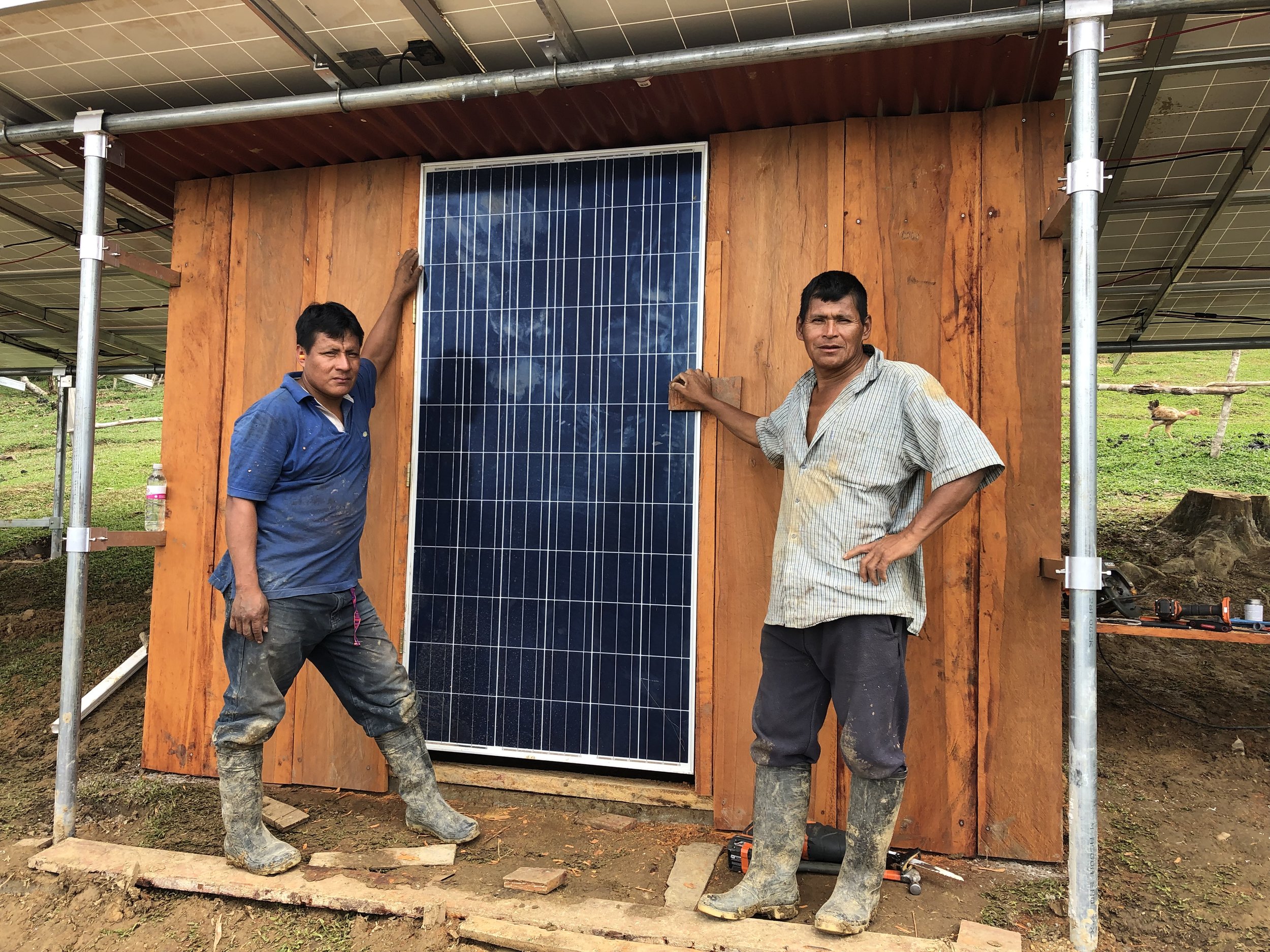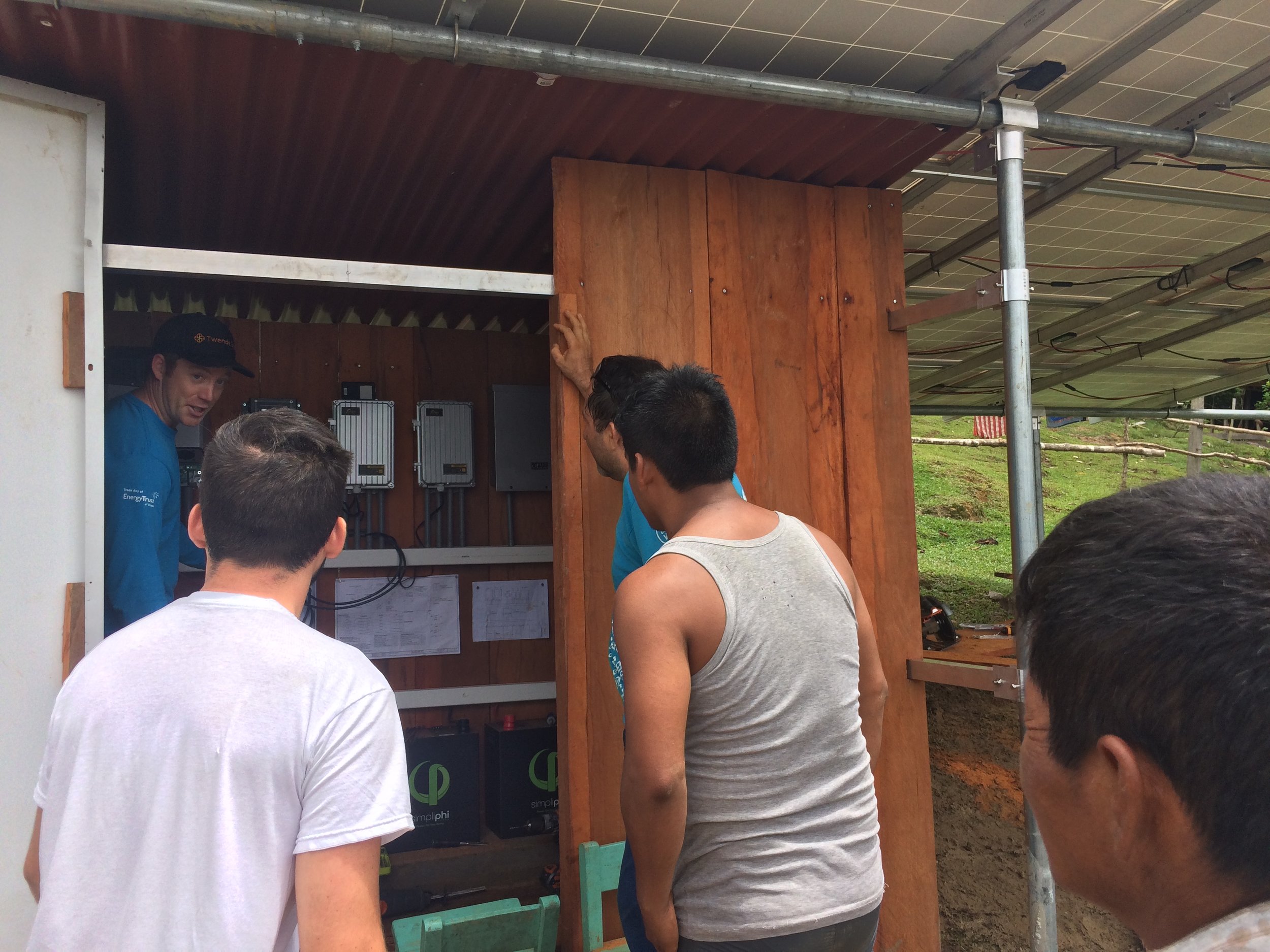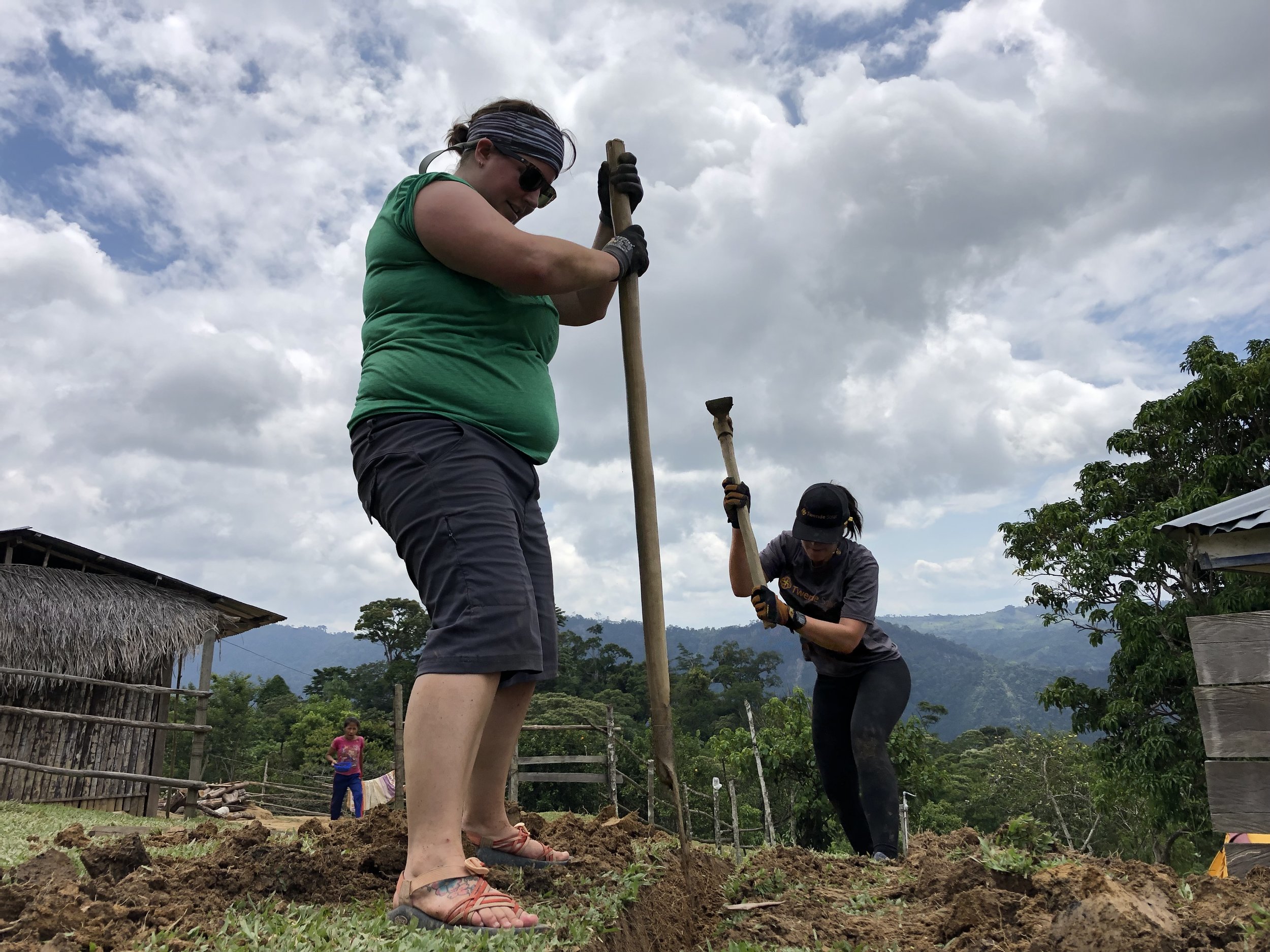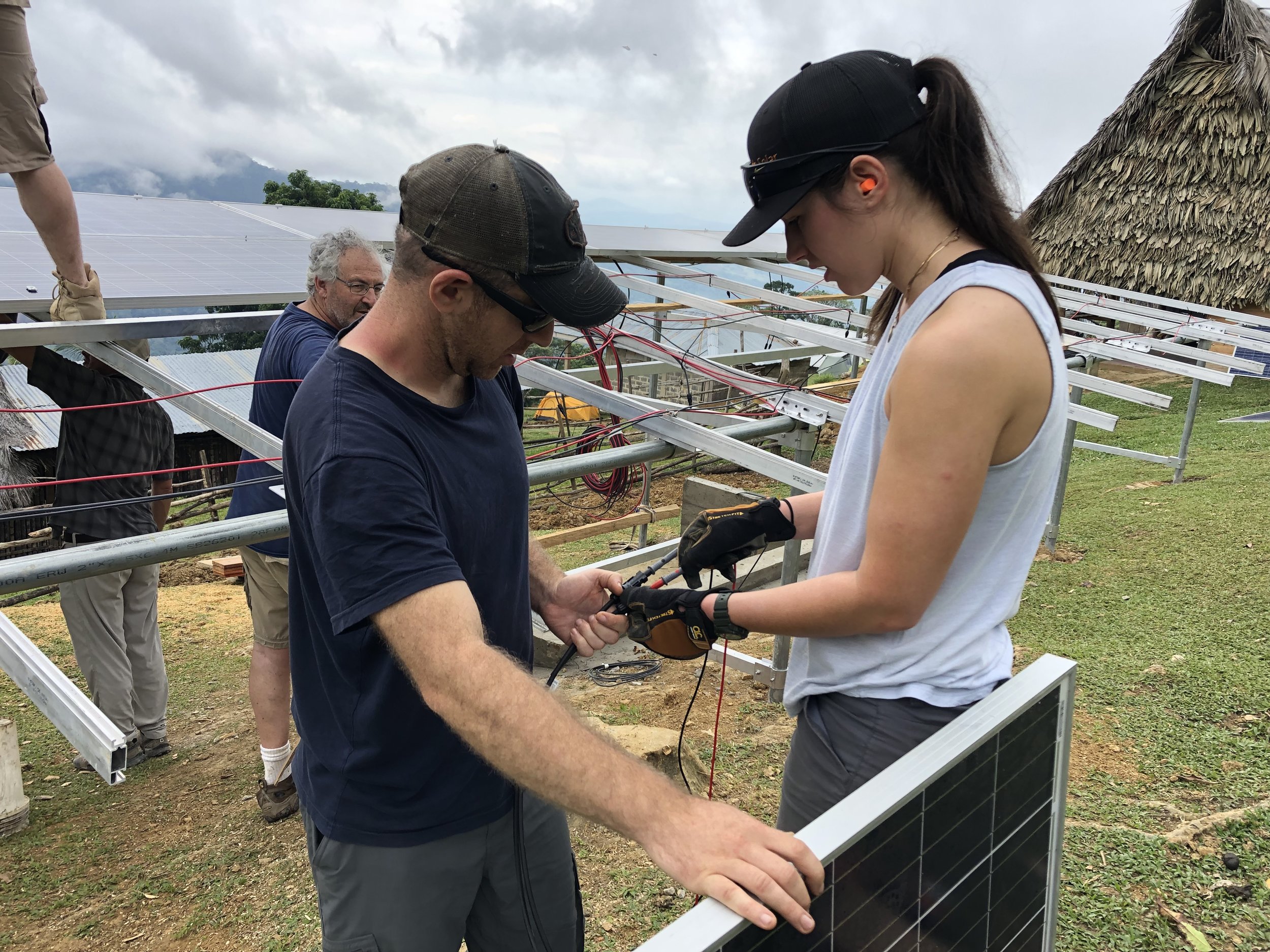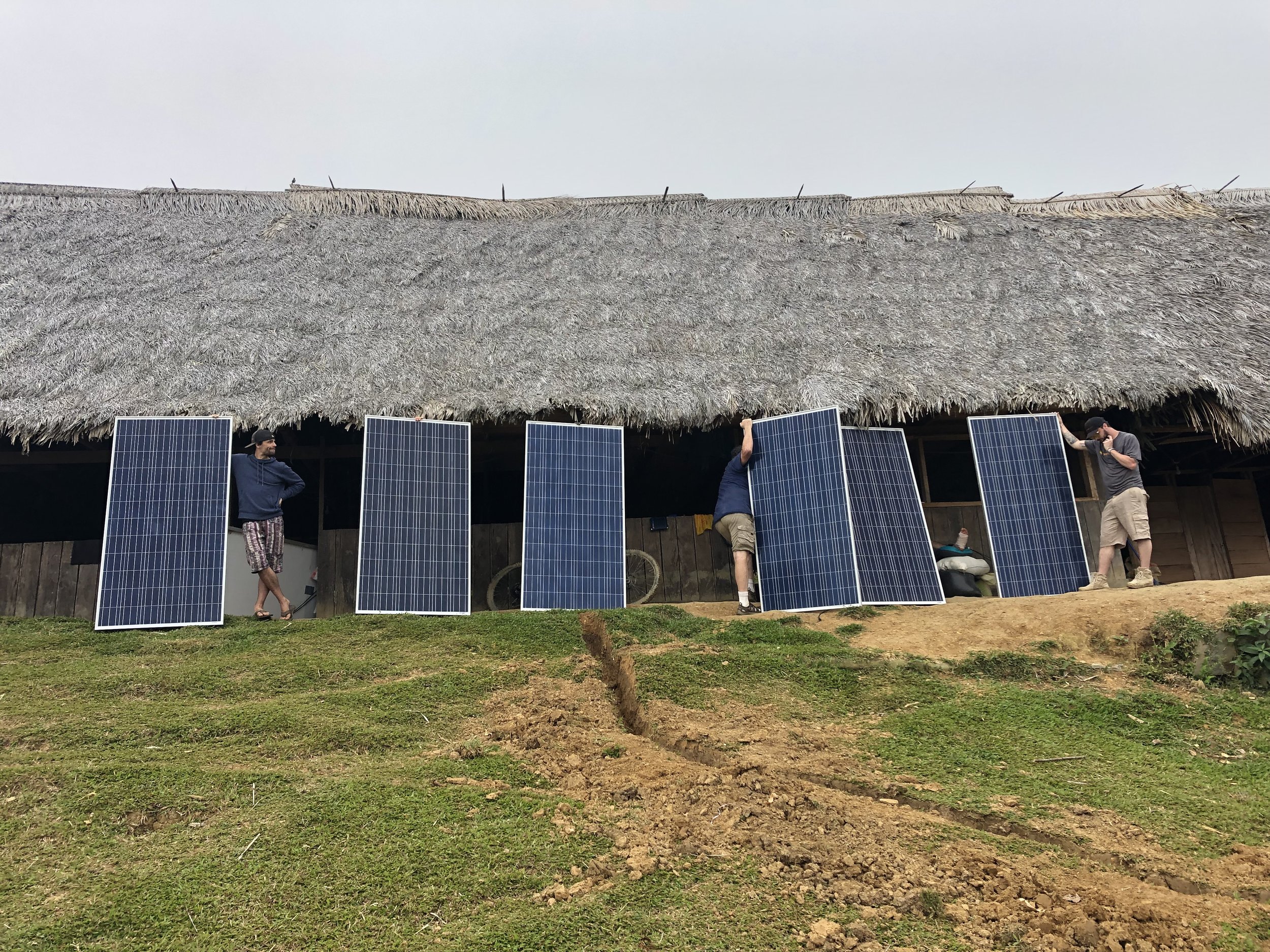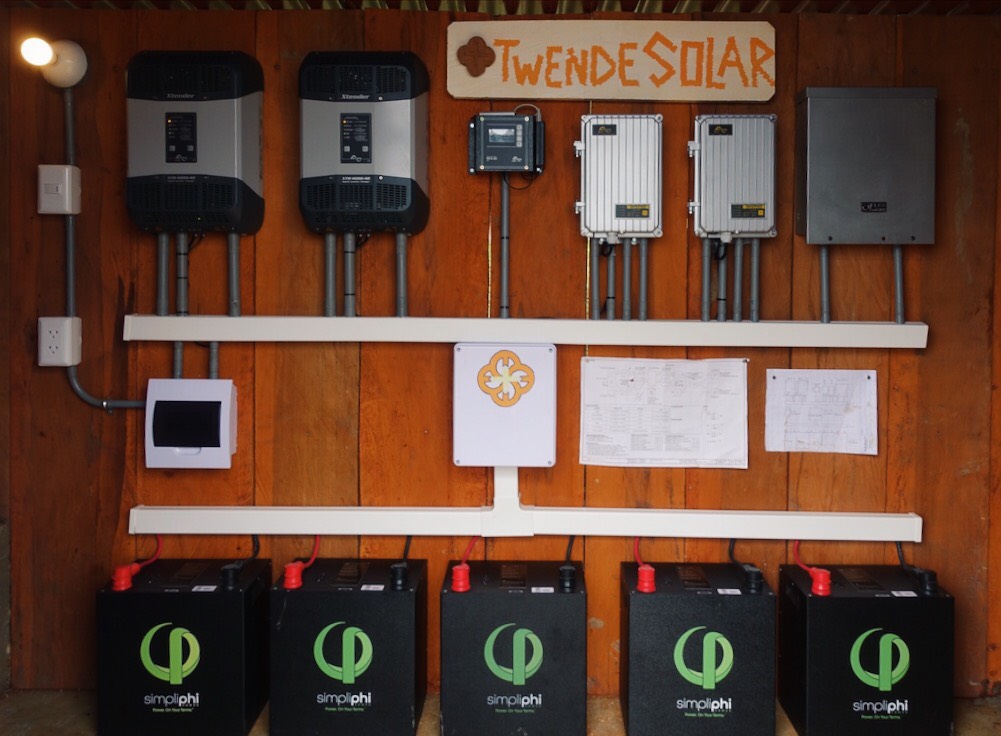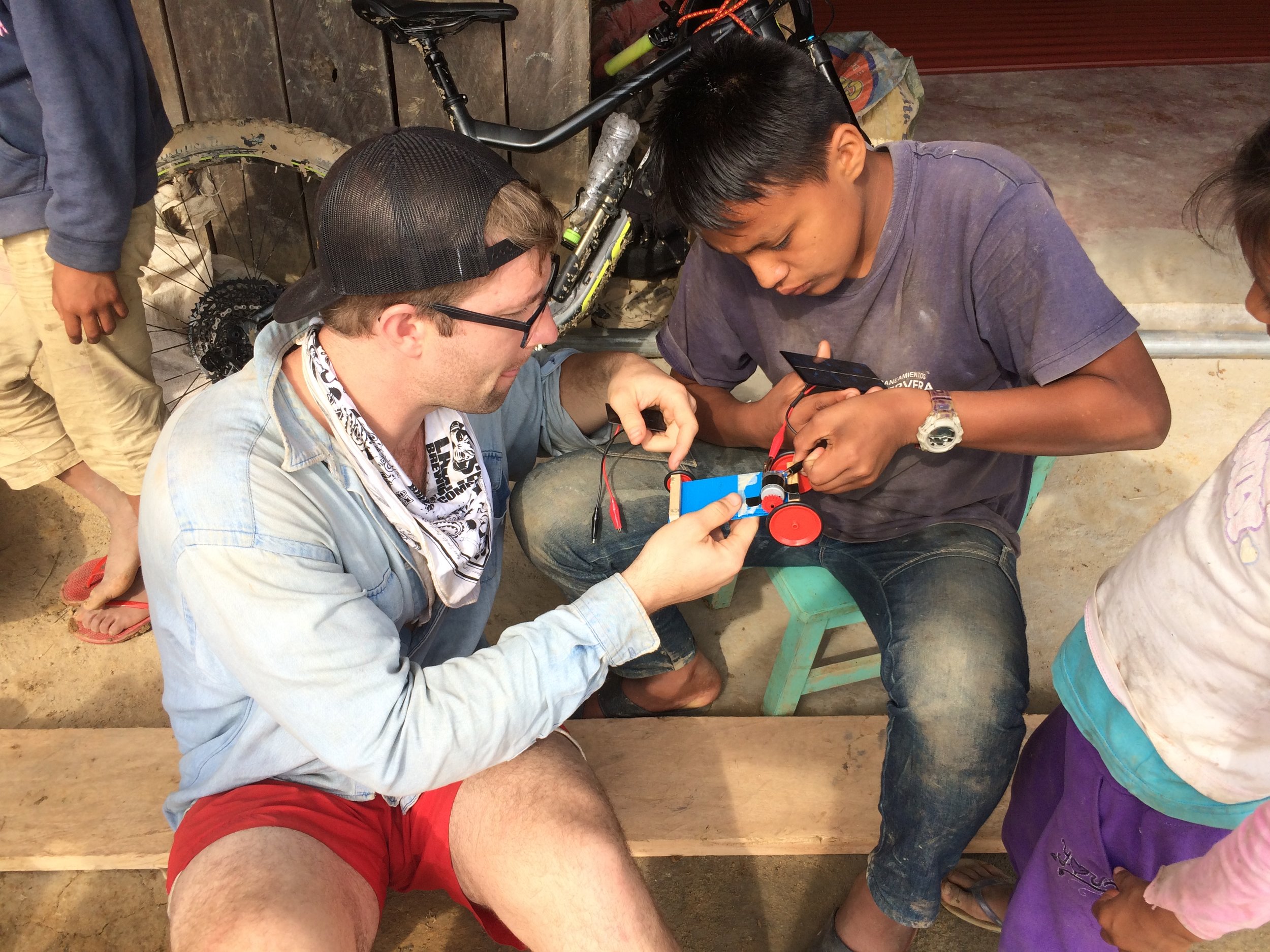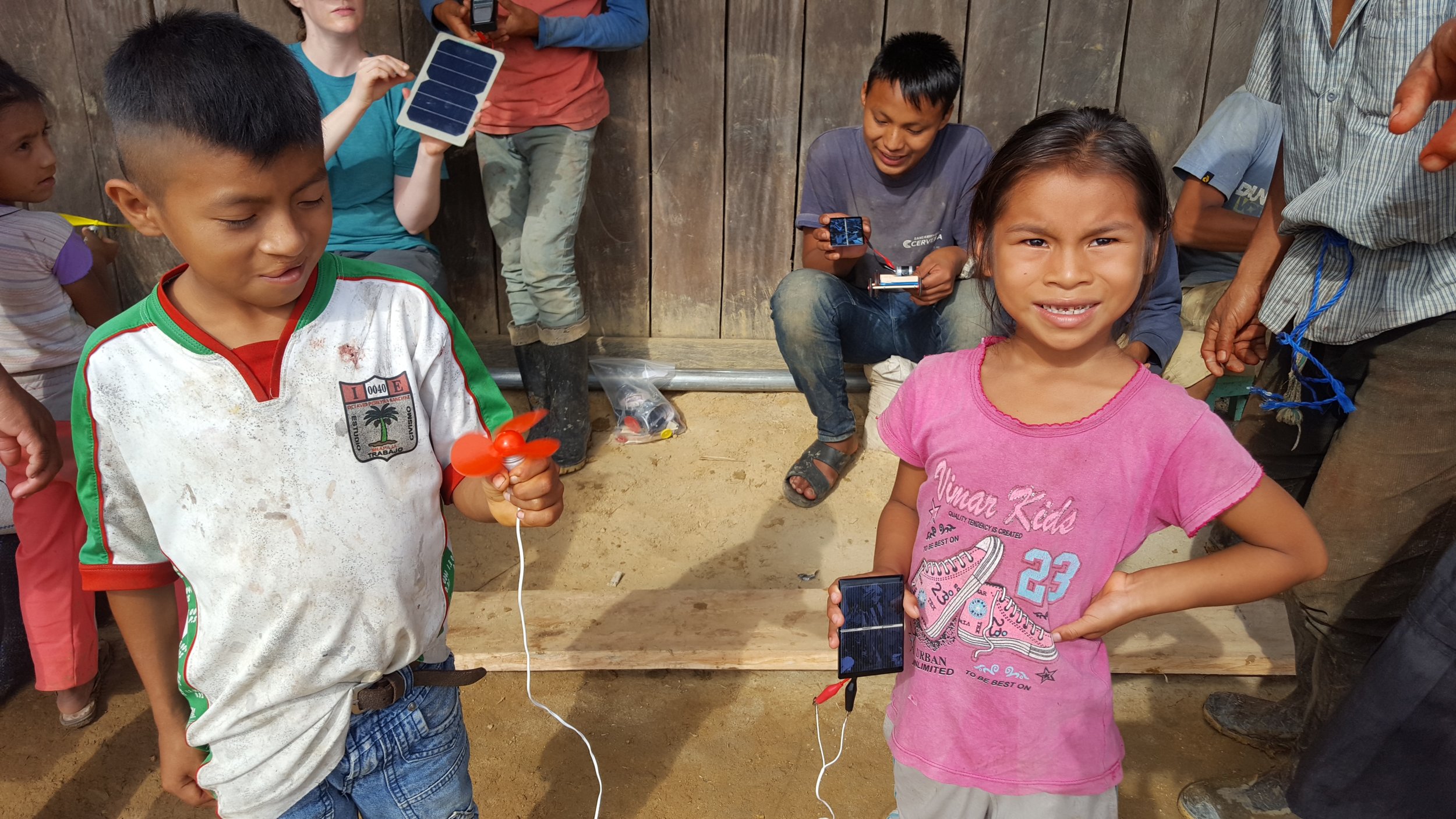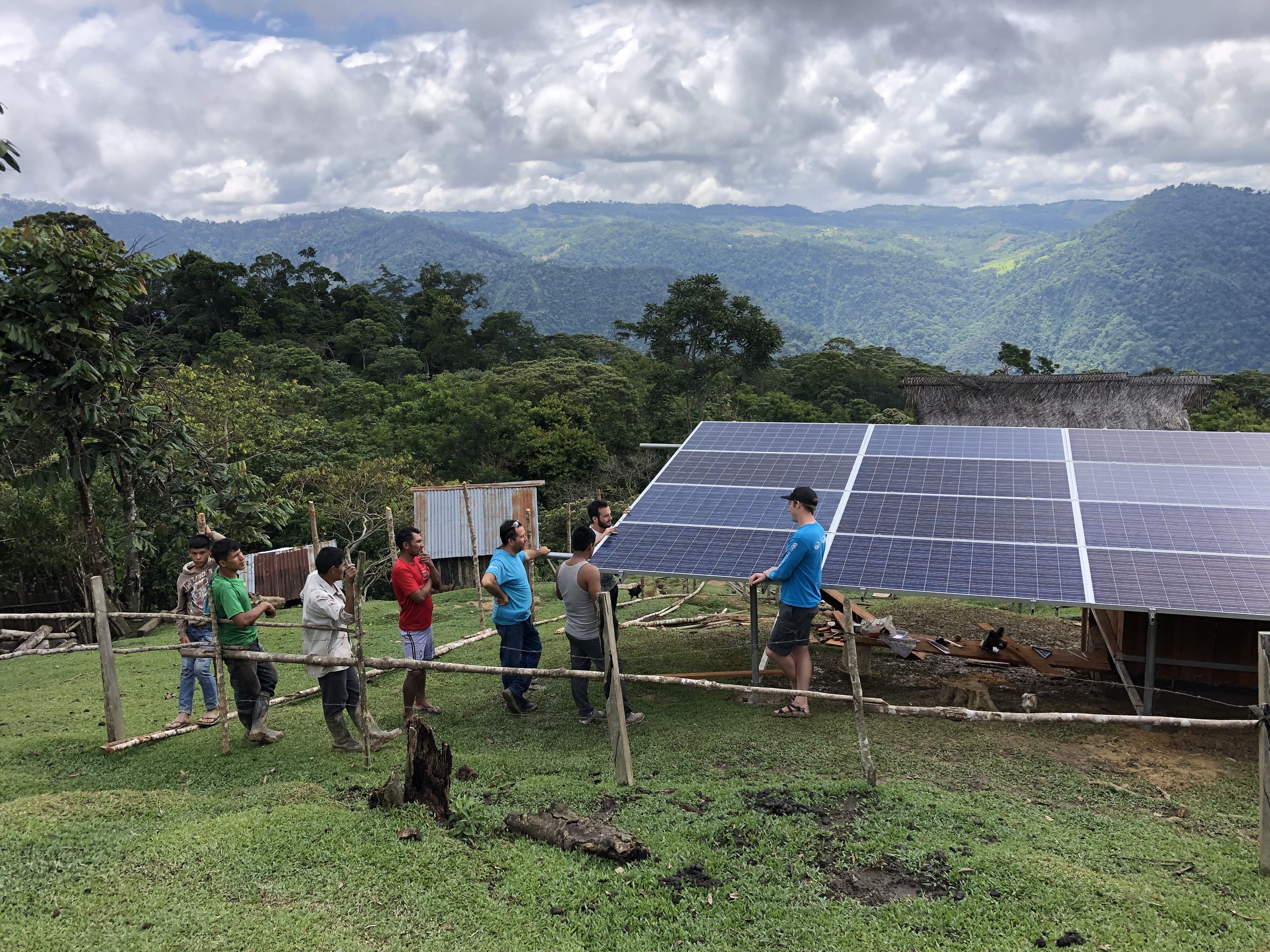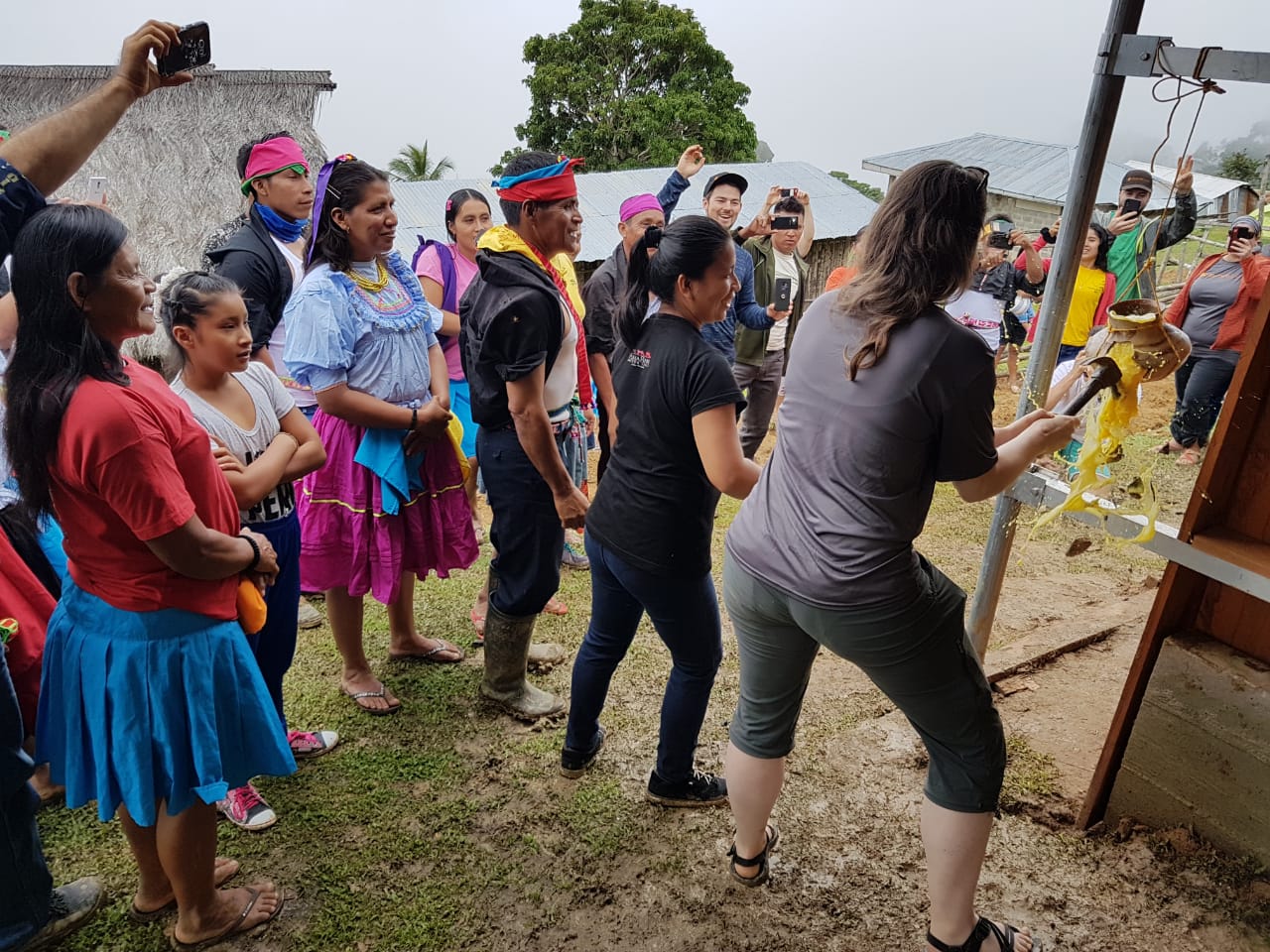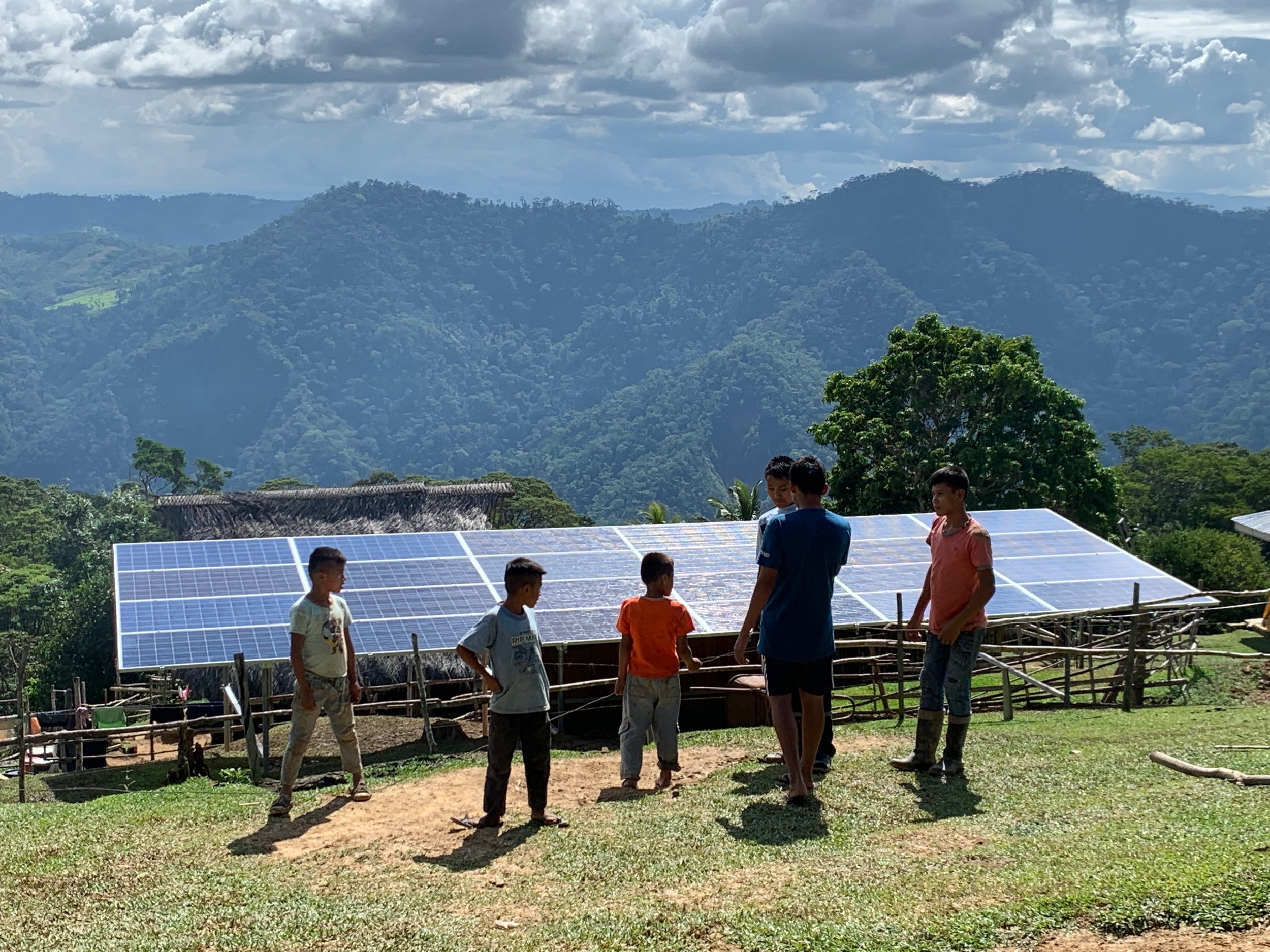Though the name Perú means “land of abundance”, more than 10% of the rural population is still left in the dark without access to modern electricity and left further behind after the country’s recent boom of economic development.
The indigenous people of the Mushuk Lamas community are among the 2 million Peruvians without sufficient access to electricity. Living adjacent to the protected area of the Cordillera Escalera, members of the community are engaged in conservation efforts and help bird watchers and nature lovers responsibly explore the high cloud forest of the Amazon. With four solar panels at the nearby government school being the only source of electricity for this community of 25 families, expensive kerosene-fueled lamps and battery-operated flashlights illuminate essential after-dark activities.
Through the dedication and expertise of 15 volunteers from the PV industry and beyond and the generosity of family, friends and industry manufacturers, a 7.3kW system was planned, designed and installed to the high standards of the US National Electrical Code in the high Peruvian jungle.
As a community of traditionally designed homes and common structures adorned with beautifully woven palm or corrugated tin roofs, a ground-mount PV array was determined to be the best option. The base for the array and battery room was purchased and constructed by members of the Mushuk Lamas community in consultation with the design team. With a few simple tools and a few afternoons of hard work, eight post holes were precisely dug and filled with steel irrigation pipe and concrete made from pounding local sandstone into sand.
The donated Unirac ground-mount system provided the perfect opportunity to construct a weatherproof battery and electrical equipment room beneath the array to protect the equipment from the elements. Using Unirac’s bracing materials as framing, volunteers and community members attached polyurethane sheeting for a roof and hired a local craftsman to hand mill boards for the walls. Signal Energy Constructors donated the panels for this system and an extra was used as a de facto door so a spare is kept handy. This room provided plenty of dry space for volunteers to install the two STUDER Innotec XTM 4000-48 inverters purchased locally with a 10-year warranty from Q-Energy, charge controllers, GSM data monitoring device and 5 SimpliPhi 3.5kWh 60-Amp batteries.
While construction on the array and battery room was happening, two other teams of volunteers and community members wired the community center, communal kitchen, and medical post with lights, switches, and outlets and dug trenches to run power to those buildings. Volunteers worked with community leaders to determine the best placement of lights and outlets for maximum benefit and convenience. The Twende team also worked to install floodlights for the soccer field as a special surprise for the community.
With the community pitching in so enthusiastically after nearly two years of waiting, the project was completed ahead of schedule, leaving time to get to know community members and local farming practices, enjoy great food and company, and kick the fútbol around a bit!
No Twende system is complete without instruction for the local community about the benefits of solar, how their system and others like it work, and how to protect and maintain their investment for decades to come.
As the last panels were being set, the community was invited to witness and to learn how to tighten clamps and get an explanation of solar electricity from volunteer Max, who spoke fluent Spanish and became a local hero for sourcing the project and seeing it to completion. When the sun came out a while later, volunteers invited the children to gather around and learn about solar circuits with hands-on materials generously lent to Twende by The Bonneville Environmental Foundation. While the kids were working on powering fans, radios, and cars with the sun, parents gathered around to watch and, perhaps, pick up on an idea or two about solar energy.
With the system in its final phase of installation, local electricians were invited to come to Mushuk Lamas for a tour of the system, its components, and capabilities. Developing relationships with local solar companies and electricians ensures that established networks are activated to quickly set things should anything unanticipated go awry with the system.
At around 6 pm on Wednesday, January 16th, the system was turned on for the first time, powering the floodlights over the soccer fields and homes at Mushuk Lamas. Apu Miguel was illuminated on the soccer field shouting to the lighted communities across the river.
“¡Mushuk Lamas, tenemos luz!”
Shortly after, at 6:30, during another downpour, a community member received a text message from a family member in Shapaja:
“We can see your lights!”
30 minutes later with the deluge continuing, the power went out in Shapaja but all was bright at Mushuk Lamas.
The first uses of the electricity at Mushuk Lamas were for things that we take for granted every day: to light the kitchen while cooking dinner, to enjoy that dinner and socialize, to charge a cell phone to stay connected to loved ones and to gather with friends for a game of soccer. It was a humble but important beginning and we are excited to hear about how the community will choose to use the electricity in the future. We will rejoice with them when they plug in their first refrigerator, power up a laptop and connect to the internet, or depulp coffee beans with a new machine for the next harvest.





